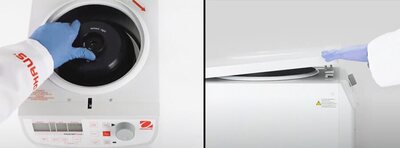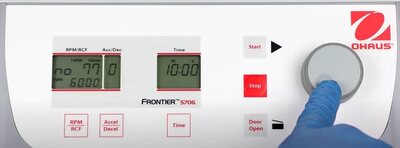Best practices for safe centrifugation in the laboratory

A high-speed centrifuge is a common sight in laboratories. They are essential for liquid and gas sample separation based on density. Scientists rely on them when studying cells, proteins, viruses and more. However, there are concerns that necessitate both careful selection of a high-quality centrifuge and safety training to ensure an accident-free laboratory.
If used improperly, centrifuges can pose safety risks because of the high centrifugal forces generated by the rotor during use. Improper installation of the rotor or sample imbalance can result in damaged equipment, ruined samples and, at worst, serious injury. Sample container breakage is a very real concern as broken glass can cut or otherwise injure the operator, leaked liquids may cause burns or skin irritation and released aerosols can be harmful if inhaled.
Safety first
According to guidance issued by OSHA (Occupational Safety and Health Administration of the United States), the majority of all centrifuge accidents result from user error. These tips from OHAUS will help to ensure safe operation.
Before operation:
- Make sure centrifuge bowls and tubes are dry and the spindle is clean.
- Do not overfill tubes or containers.
- Use safety cups/buckets to contain potential spills and prevent aerosol leakage.
- Ensure that the rotor is properly seated on the drive shaft.
- Make sure that tubes or containers are properly balanced in the rotor.
- Only check O-rings on the rotor if you are properly trained.
- Follow the manufacturer’s guidelines for maintenance and operation.

During operation:
- Never exceed the rotor’s maximum run speed.
- Keep the centrifuge lid closed.
- Check that the centrifuge is operating normally before leaving the area.
- Do not open the lid until the rotor has come to a complete stop.
- If a spill occurs, use appropriate decontamination and clean-up procedures; use tweezers to remove broken glass.

After operation:
- Clean rotors and accessories using neutral cleaning solutions and a soft cloth.
- Do periodic visual inspections of rotors to check for residue and corrosion.
- Inspect the rotor for cracks or nicks and replace rotors that show any signs of wear or damage.
To ensure safe operation, reliability and long life of your centrifuge, it is essential to take proper care of the unit and rotors between usage. For maintenance tips, refer to the OHAUS Centrifuge and Rotor Maintenance & Cleaning Guide.
Safe, reliable centrifuges
OHAUS Frontier centrifuges are designed for safe use and ease of operation with a range of smart features. The series covers a range of sizes and features to suit basic and advanced centrifugation applications. To determine which model will best suit your needs, refer to the OHAUS Frontier 5000 Rotor Guide.

Nature-inspired filtration system recovers critical resources
A filtration system that can recover untapped critical resources such as copper and lithium from...
Optimising food and beverage testing with laboratory equipment
In the food and beverage industry, laboratories must balance precision, speed and compliance to...
Ocean acidification may be damaging sharks' teeth
Sharks can famously regrow their teeth — but this ability might not be enough to ensure...





